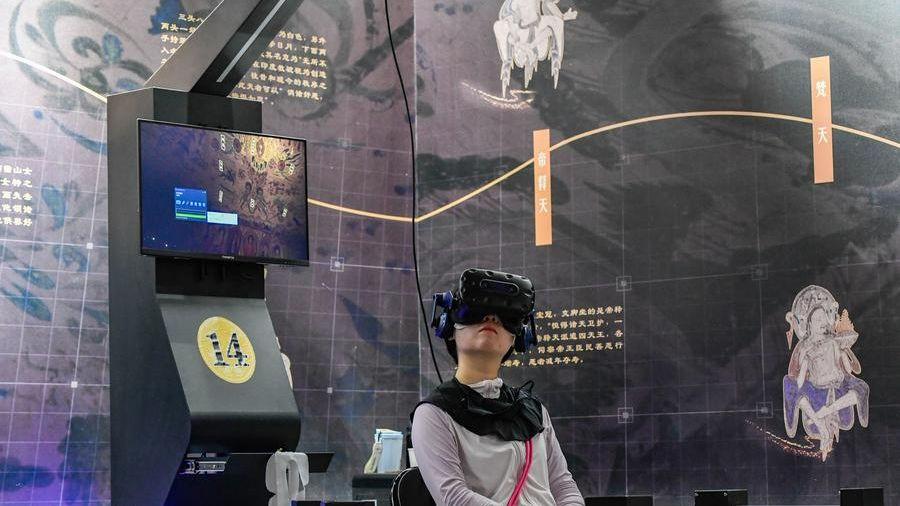A visitor uses virtual reality (VR) equipment to visit the Mogao Grottoes in Dunhuang, northwest China's Gansu Province, July 22, 2024. (Xinhua/Lang Bingbing)
LANZHOU, Nov. 16 (Xinhua) -- A Chinese university recently joined hands with a French foundation to protect cultural heritage by strengthening scientific and technological cooperation. It was the latest move of the two countries to cooperate on cultural relics preservation.
Under an agreement signed last week by Northwest Normal University in China's Gansu Province and France's Foundation for Cultural Heritage Science (Fondation des Sciences du Patrimoine), the two parties will foster exchanges and cooperation in higher education and research.
They will put a strong focus on collaborative activities in the interdisciplinary field of cultural heritage analysis techniques, establish a joint laboratory for cultural heritage preservation methods and instruments, and conduct relevant research to support heritage conservation efforts in both countries.
"This agreement aims to provide advanced scientific and technological support for cultural heritage conservation, including the protection of murals and other heritage works," said Emmanuel Poirault, general director of the foundation.
"We have been actively advancing scientific exchanges and project collaborations with France in cultural heritage preservation. This agreement will further enhance Gansu's research capabilities in cave art and relic conservation," said Lu Zhenjiang, an official from the provincial science and technology department.
It was not the first time Chinese authorities and institutions had cooperated with the French foundation or other counterparts. As this year marks the 60th anniversary of the establishment of diplomatic relations between China and France, there have been numerous exchanges and activities across various fields.
Between 2019 and 2024, Emperor Qinshihuang's Mausoleum Site Museum in northwest China and France's Foundation for Cultural Heritage Science conducted a series of scientific studies on conserving wooden remains and earth sites.
In May, the two sides officially signed a cooperation agreement, and the experts from the two countries conducted joint research on the restoration techniques for protecting the wooden materials of the mausoleum site and Notre Dame Cathedral. They achieved significant results in identifying wood species, wood dating and restoration techniques.
These joint efforts have extended beyond the restoration of cultural relics, with China and France working together on the digitalization of their heritages.
China's Dunhuang Academy and France's Guimet National Museum of Asian Arts in March signed a memorandum of understanding aimed at creating a digital resource library in the Library Cave of the millennium-old Mogao Grottoes.
Built between the 4th and 14th centuries, the Mogao Grottoes are home to a vast collection of Buddhist artworks, with more than 2,000 colored sculptures and 45,000 square meters of murals located in 735 caves.
The two countries have long conducted bilateral cooperation in the exchange, preservation and resource sharing of Dunhuang culture and art, according to the Dunhuang Academy.
Under the recent collaboration, the two sides are expected to carry out systematic research, restoration and protection of cultural relics in the Mogao Grottoes. Additionally, they will also hold international academic seminars on cultural relics research, protection and digital humanities.
In 2020, the Chinese academy and the French museum launched a project to globally share the Dunhuang relics discovered in the grottoes in a digital format. Technologies including digitalization of the relics, artificial intelligence and virtual reality were utilized in the project.





 A single purchase
A single purchase









